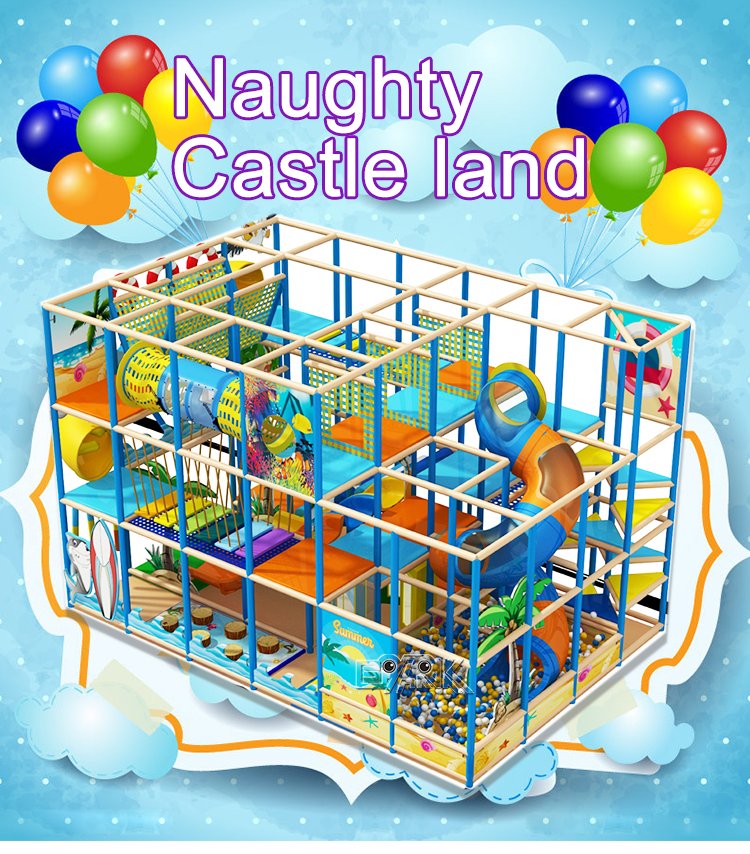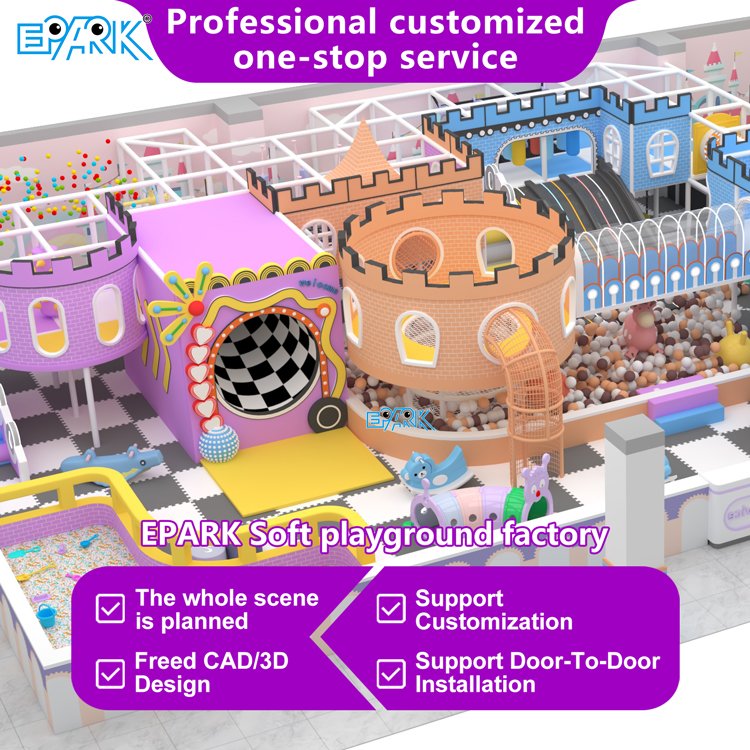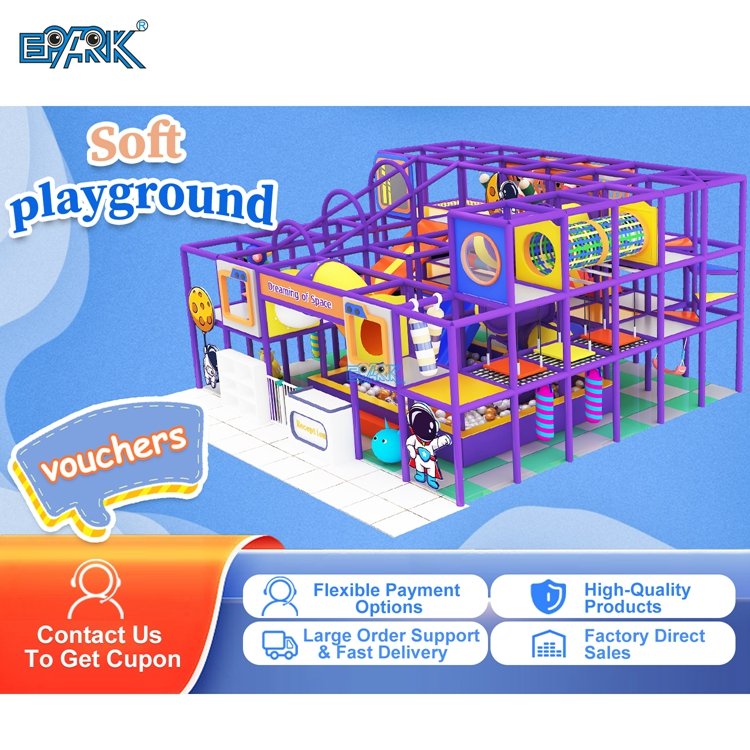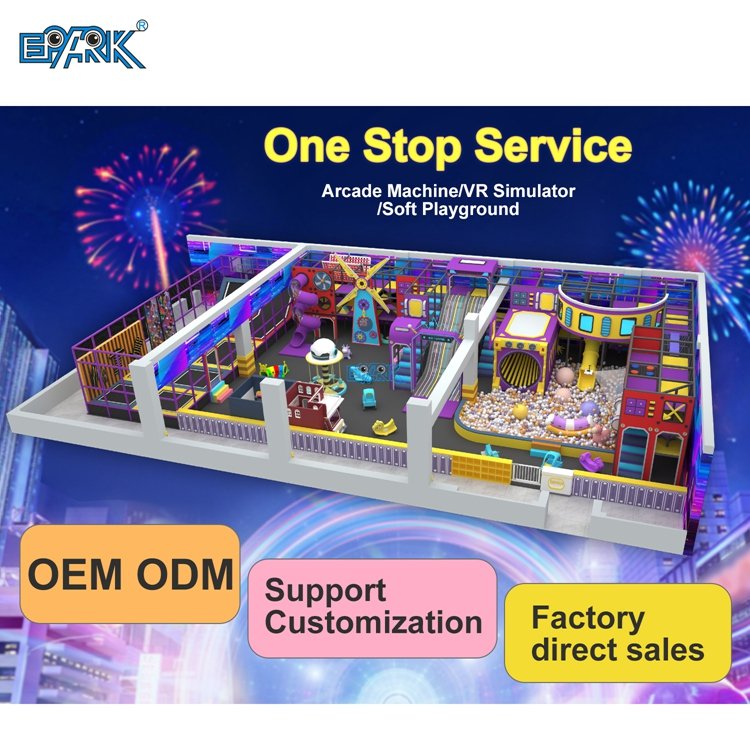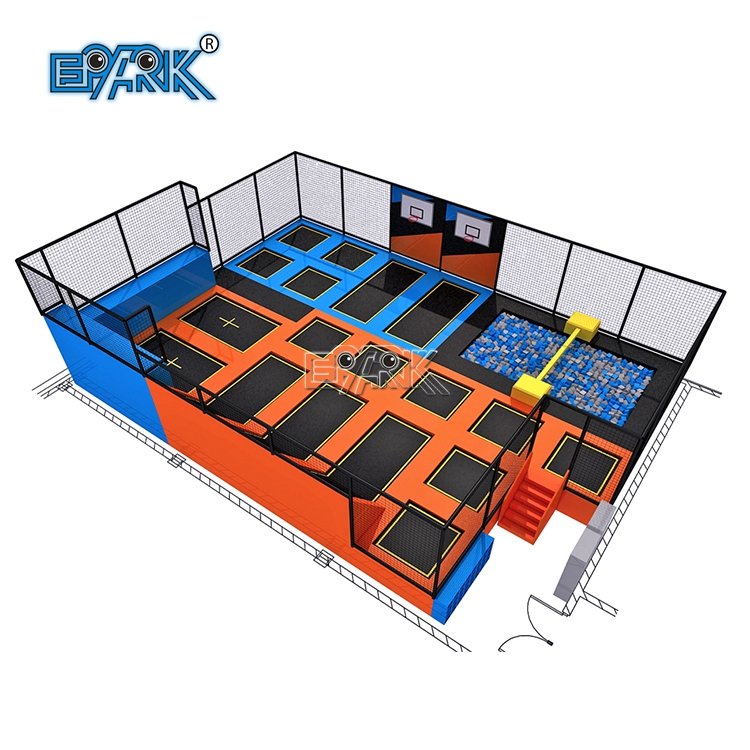Indoor playgrounds have evolved significantly over the past decade, becoming a cornerstone of modern family entertainment centers (FECs), shopping malls, educational institutions, and even wellness resorts. As the demand for child-friendly and weather-independent recreation rises globally, understanding the different types of indoor playgrounds is essential for investors, operators, and designers.
This comprehensive guide categorizes the main types of indoor playgrounds, explains their unique features, highlights key technical standards, and provides insights into which models best fit various business scenarios.
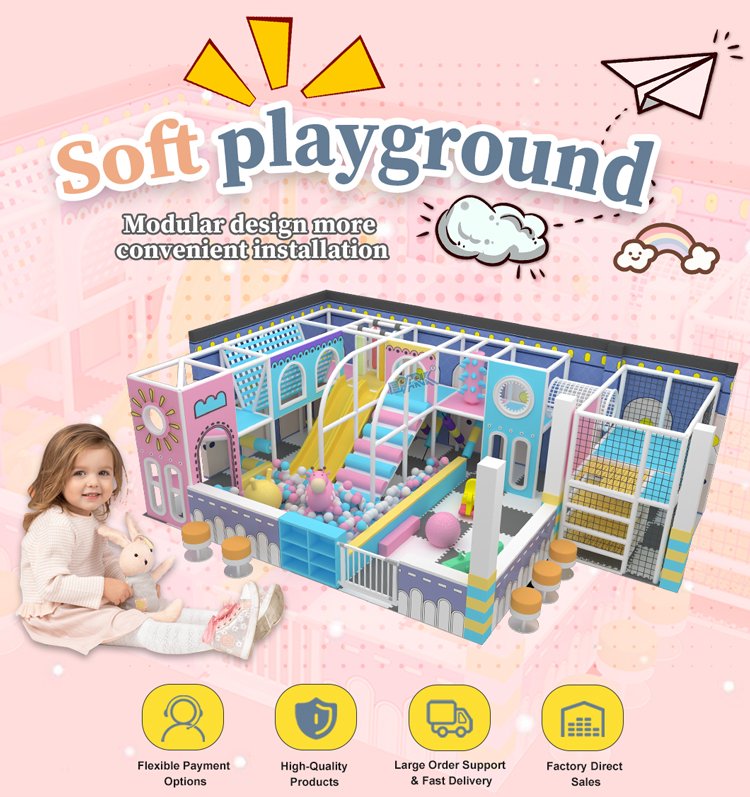
1. Soft Play Structures
Soft play areas are the most common type of indoor playgrounds. Designed for safety and imaginative play, these modular structures include padded surfaces, tunnels, climbing frames, ball pits, slides, and interactive elements.
Key Features:
Age Range: Primarily suitable for children aged 2–10 years.
Material: PVC vinyl, foam padding, anti-bacterial coatings.
Structure: Multi-level, modular, customizable.
Certifications: ASTM F1918 (USA), EN 1176 (EU), ISO 9001 for manufacturing.
| Feature | Specification |
|---|---|
| Frame Material | Galvanized Steel / Powder-coated Iron |
| Padding Density | ≥ 35kg/m³ (High resilience foam) |
| Surface Coating | Fire-retardant & UV-resistant PVC |
| Flooring | EVA safety mats / anti-slip tiles |
Business Suitability:
Ideal for shopping malls, family entertainment centers (FECs), and daycare centers. Operators benefit from flexible layout options and high daily footfall.
2. Trampoline Parks
Trampoline parks have surged in popularity worldwide and are often geared toward both kids and teens. These parks can include freestyle zones, dodgeball arenas, basketball dunk areas, foam pits, and even ninja warrior courses.
Key Features:
Age Range: 5 years and up.
Material: Industrial-grade trampoline mats, galvanized steel frames.
Add-ons: Wall running, climbing panels, interactive LED zones.
Certifications: ASTM F2970, TUV Rheinland standards.
Safety Standards:
Trampoline springs must have safety covers.
Jumping mats require high tensile strength (≥ 3500N).
Foam pits should be at least 80cm deep with layered foam cubes.
Business Suitability:
Best for large-format entertainment venues, sports complexes, and activity-based education centers. The ROI is strong when combined with birthday party packages and membership models.
3. Toddler Play Zones
Toddler play zones are specially designed areas for infants and preschoolers (ages 0–5). These zones emphasize sensory development, motor skills, and safe exploration.
Key Features:
Age Range: 0–5 years.
Design Philosophy: Low height, rounded corners, bright colors.
Components: Mini slides, soft climbers, sensory panels, rocking animals.
Design Considerations:
Maximum fall height: ≤ 60cm.
Equipment spacing: Minimum 1.5m between stations.
Flooring: Foam mats, rubber tiles with R10 slip rating.
Business Suitability:
Perfect for nurseries, parent-child cafes, pediatric clinics, and preschools. Also serves as a complementary zone within a larger FEC.
4. Adventure and Obstacle Courses
Adventure play areas incorporate elements of physical challenge and coordination, often inspired by military or ninja warrior designs. They appeal to older kids and teens seeking more active experiences.
Key Features:
Age Range: 6–16 years.
Activities: Rope bridges, swinging rings, climbing walls, zip lines.
Design: Dynamic, progressive difficulty, timer-based challenges.
| Component | Suggested Specification |
|---|---|
| Climbing Walls | Auto-belay or padded crash mats |
| Rope Materials | Nylon, 8-strand minimum |
| Support Structure | Load-bearing steel, ≥ 300kg/m² load rating |
Business Suitability:
Well-suited for large play centers, sports venues, and schools. It also aligns with fitness trends and gamified training environments.
5. Edutainment Playgrounds
“Edutainment” blends education and entertainment, encouraging children to learn through play. These setups are popular in museums, science centers, and high-end shopping centers.
Key Features:
Age Range: 3–12 years.
Learning Themes: STEM, environmental science, arts & crafts.
Interactive Components: Touchscreens, sensory walls, robotic kits.
Integration Opportunities:
RFID wristbands for tracking progress.
Digital screens to display educational content.
Smart sensors to gamify learning outcomes.
Business Suitability:
A hit among parents who prioritize value-driven experiences. Works well in malls, schools, and tourist zones.
6. Inflatable Playgrounds
Inflatable playgrounds are air-filled structures that can be easily set up and dismantled, making them perfect for events or mobile operations.
Key Features:
Material: PVC tarpaulin (≥ 0.55mm), heat-sealed seams.
Components: Slides, obstacle courses, bounce zones.
Age Range: 3–12 years (varies by design).
Safety Guidelines:
Air blower must be continuous operation rated.
Entrances/exits need anti-deflation safety flaps.
Surface must be flat, dry, and free of sharp objects.
Business Suitability:
Perfect for event rentals, festivals, indoor sports arenas, or seasonal operations. Requires minimal installation time.
7. Interactive Digital Playgrounds
These modern playgrounds merge technology with physical play using sensors, projection mapping, AR/VR, and motion-tracking games.
Key Features:
Technology Used: Lidar sensors, motion cameras, LED displays.
Games: Dance floors, virtual climbing, projection-based ball games.
Software: Custom game engine or third-party game licensing.
Data & Analytics:
Operators can gather real-time usage data, engagement metrics, and even player heatmaps for optimizing performance.
Business Suitability:
High-end FECs, tech malls, innovation centers, and brand experience centers. A growing trend among Gen Z parents and tech-savvy children.
Comparison Table: Types of Indoor Playgrounds
| Type | Age Range | Investment Level | Setup Time | Key Benefit |
|---|---|---|---|---|
| Soft Play Structures | 2–10 yrs | ★★★ | Medium | High safety & customization |
| Trampoline Parks | 5+ yrs | ★★★★★ | High | High footfall & repeat visits |
| Toddler Play Zones | 0–5 yrs | ★★ | Low | Ideal for early learning centers |
| Obstacle Courses | 6–16 yrs | ★★★★ | Medium | Active play + competitive appeal |
| Edutainment Playgrounds | 3–12 yrs | ★★★ | Medium | Combines fun with education |
| Inflatable Playgrounds | 3–12 yrs | ★★ | Low | Portable & low maintenance |
| Digital Playgrounds | 5–12 yrs | ★★★★★ | High | High-tech, data-driven operation |
Final Thoughts
Choosing the right type of indoor playground depends on your target audience, space availability, budget, and business model. Whether you’re opening a community center or a high-end entertainment complex, blending multiple play types often delivers the best return on investment.
From soft play and trampoline parks to digital and educational experiences, today’s indoor playgrounds offer endless possibilities for engagement, learning, and physical activity.
Tips for Investors:
Conduct market research on age demographics and local competition.
Verify international safety certifications before purchasing equipment.
Prioritize modular designs for easier upgrades and layout changes.
Explore franchising models if seeking scalability.
For a customized solution tailored to your venue or location, consult an experienced indoor playground manufacturer who can provide design, layout, and installation support.
Author: EPARK Amusement
Experience: Over 10 years in designing and manufacturing custom indoor playground solutions for global markets.
Contact Us: For a free floor plan and quote, reach out at [your website/contact].

